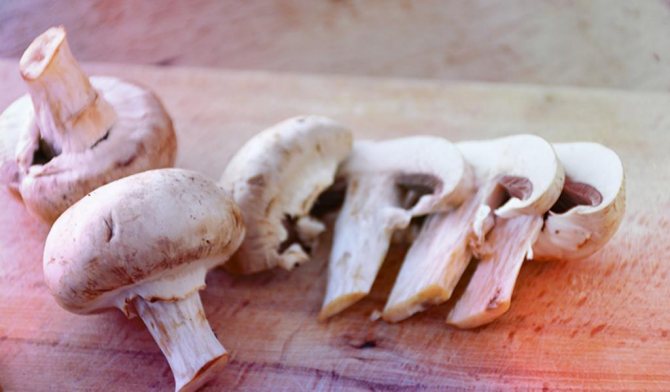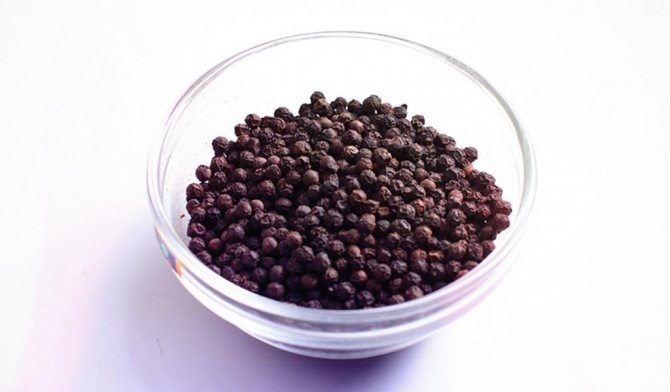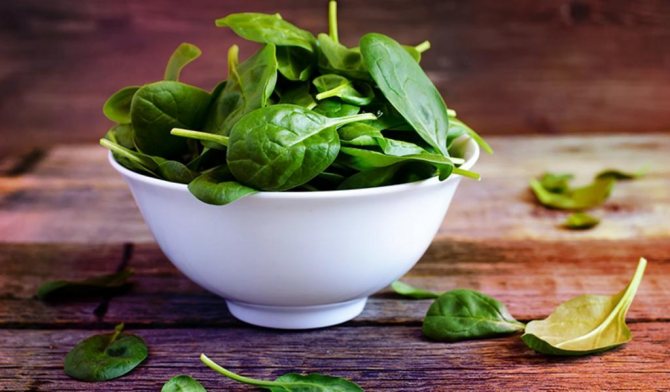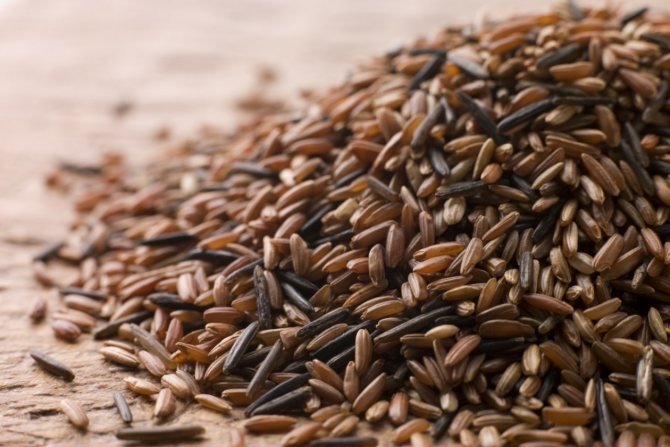05/02/2018 Healthy nutrition
Vanadium is a trace element that was discovered in the early 19th century by Andres Manuel Del Rio. The component was opened twice.
It bears atomic number 23. Vanadium occupies a place in the secondary subgroup of group V of the IV period of the periodic table of elements of D. I. Mendeleev.
Vanadium is a ductile, malleable metal with a silver-steel tint.
For the first time, a professor of mineralogy discovered this element in lead ores of Mexican rocks, however, European chemists did not accept this discovery. Among them, vanadium was recognized only in 1830. Only when Nils Sefström, a Swedish chemist, while studying iron ore, drew attention to this element, vanadium was recognized in Europe.
The name of the component was given in honor of the daughter of the Vanir, who is the goddess of love and beauty among the Scandinavian peoples. The element got it due to its attractive appearance. Thus, the component received a divine name.
Food sources of vanadium. What products can this component be obtained from?
Many foods are saturated with vanadium. If you want to replenish the amount of this component in the body, then add cereals to your diet. These include rye, oats, wheat and barley; cereals such as rice and buckwheat are also useful.
A lot of vanadium is included in legumes. Consume peas and beans if your body lacks vanadium.
Don't forget about vegetables and fruits. Lettuce, radishes, potatoes, beets and carrots contain this microelement. Pears, cherries and strawberries are rich in it.
Doctors do not recommend consuming additional vanadium, since a person receives a sufficient amount from food.
Is vanadium needed in dietary supplements for athletes?
Many complex dietary supplements include vanadium in safe dosages established by scientists. There are also drugs where this metal is the main active ingredient, for example “Vanadyl sulfate”. These supplements are taken not only on medical advice, but also for sports purposes. How has vanadium performed in dietary supplements for athletes? This issue is still controversial.
Supporters of taking vanadium in sports were found primarily among bodybuilders and bodybuilders. Relying on the insulin-like property of vanadium to increase glucose consumption by muscles, they argue that the anabolic effect is inherent in this substance, like insulin. Also, vanadium-containing drugs are expected to reduce weight by reducing fat and improving cardiovascular activity. However, scientific and experimental evidence of a statistically significant increase in sports performance as a result of taking vanadium sulfate was not found. Only the blood sugar-lowering effect of this metal was confirmed in experiments on rats. Therefore, skeptics have every right to doubt the miraculous effect of vanadium on muscle growth promised by pharmaceutical advertising.
Considering the lack of scientific research on this issue and the potential danger of intoxication from an overdose of vanadium, it is better to be careful with this trace element, replenishing it in the body naturally or using supplements where its content is moderate.
Useful properties of vanadium. How does a trace element affect the body?
Vanadium plays the greatest role in the regulation of lipid and carbohydrate metabolic processes.
The component is necessary for energy production in the body. It is thanks to vanadium that the percentage of cholesterol in the blood decreases. With a lack of vanadium, the condition of patients with high cholesterol levels may worsen.
It helps stimulate the movement of blood cells, which help destroy pathogens in the body.
Vanadium ensures the balance of potassium and sodium in the body. It also helps protect the human body from tumors and edema. With a sufficient amount of vanadium in the blood, the functioning of the muscular skeleton improves.
Cell growth directly depends on the amount of vanadium. Their full development also depends on this component.
This trace element can affect the level of hemoglobin in the blood. It is responsible for the formation of teeth and bones in childhood.
Mushrooms
Mushrooms are another vegetarian source of vanadium. They can be bought fresh or frozen, and many people, depending on where they live, can go to the forest to pick chanterelles, honey mushrooms, porcini mushrooms or other types of mushrooms on their own.
Mushrooms can be used in the preparation of numerous soups, salads, pies or casseroles. They have a rich, bright and pleasant taste, so they rarely leave anyone indifferent.
Mushrooms go well with meat, vegetables or other side dishes. They are seasoned with different sauces, which can be creamy or red wine based. You can choose different types of mushrooms, but if you plan to collect them yourself, then you need to understand the different types, and also carefully sort through the products to get rid of wormy mushrooms.
Creamy coconut milk ice cream with a quick and easy recipe
Your zodiac sign will tell you how to cheer you up: for Pisces, this is slicing cheese
I bought mattresses for garden furniture, paint and updated my grandmother’s old sofa.

Interaction of vanadium with other components
Chromium has a positive effect on vanadium, as it reduces the toxicity of this trace element. Proteins have the same effect.
Vanadium goes well with zirconium. This pair is responsible for the functioning of the lungs, liver, spleen, thyroid and pancreas, as well as the genitourinary system and pituitary gland. Therefore, these components are important for the body.
You should not combine vanadium with vitamin C and iron, as this will only increase its negative properties.
Black pepper
It is sold whole or ground and is also a versatile spice that adds heat and brightness to any dish. Ground black pepper can be added to scrambled eggs and omelettes, and is also ideal for steak and simply fried meat. This spice contains a lot of vanadium, so constant consumption of black pepper has a positive effect on health. But you should not overdo it, otherwise eating too spicy food can negatively affect your stomach.
Chocolate-caramel sweets on a wafer base: dessert recipe
Ten-year-old boy wins title for biggest mouth
The old sofa was given away for free. The woman took it and updated it to her taste

Signs of vanadium deficiency in the body. How does microelement deficiency manifest itself?
The good news is that vanadium deficiency is quite rare.
However, microelement deficiency manifests itself as a special form of schizophrenia and a disorder of carbohydrate metabolism in the human body.
Research by scientists has shown that when there is a lack of vanadium in the body, reproductive function is impaired, the growth of muscle tissue slows down and the risk of problems with bones and teeth increases with age.
Doctors believe that it is precisely because of a lack of vanadium that diabetes can develop. And also a lack of vanadium can provoke an increase in the volume of red blood cells contained in the blood and lead to a decrease in cholesterol levels.
Is vanadium useful in food?
In the body, this element is collected in adipose tissue, bones, spleen, liver, and immune cells. Recent research by scientists has shown how important this component is in the functioning of life systems. Vanadium in food, entering the body, has a beneficial effect on many aspects of the functioning of organs and tissues:
1. Included in the process of hematopoiesis and participates in the formation of red blood cells.
2. Promotes the activation of phagocytes (cells that cleanse the blood of “garbage” and pathogenic bacteria), increasing the body’s resistance to external negative influences and infections.
3. Has a preventive effect against cancer in the mammary and prostate glands, liver, bone tissue, supporting proper cell division and development, and has an antioxidant healing effect.
4. Reduces the content of “bad” cholesterol in the blood, has a healing effect on the vascular system of the heart and brain, normalizes blood pressure, and reduces the risk of atherosclerosis.
Vanadium maintains carbohydrate metabolism in a normal state, regulates blood glucose levels, helps in the treatment of diabetes mellitus (type I and II), enhancing and complementing the action of insulin.
5. Helps regulate the functioning of muscle tissue, relieves swelling.
6. Helps in the correct distribution of calcium salts, maintaining the structure of bone tissue in good condition, participates in the formation of teeth and increases their resistance to caries, regulates the proper growth of children's bones
7. By participating in fat metabolism, it promotes active energy production.
8. Has a beneficial effect on the central nervous system, promoting the metabolism of catecholamines (hormones produced during stress), and helps slow down the aging process.
9. Has a positive effect on the functioning of the genitourinary system, spleen, lungs, thyroid and pancreas, and liver.
There is no need to rush into foods containing vanadium: small doses of the element entering the body through organic compounds help maintain the balance of this component (when humans absorb only 1% of the initial vanadium content).
Symptoms of ultramicroelement deficiency have been recreated in laboratory conditions in animal experiments and are characterized by weakening of muscle and bone tissue, and deterioration of reproductive qualities.
For a person, the most likely consequences will be destabilization of carbohydrate metabolism, a feeling of fatigue, and a sharp decrease in blood glucose levels (hypoglycemia). According to American studies, a diet that ignores chromium and vanadium in food products can become the first step to diabetes.
A rational, balanced meal intake cannot lead to vanadium deficiency, which occurs in rare cases as a result of impaired absorption of nutrients and improper functioning of the gastrointestinal tract.
Much more common is the phenomenon of element overdose, provoked by environmental factors: polluted air, gasoline and fuel oil vapors, hazardous emissions from metallurgical plants and asphalt and glass production plants. The initial toxicity of vanadium, if overabsorbed, can adversely affect health:
- dehydration,
- nausea,
- weight loss,
- mental and nervous complications (multiple sclerosis, depression),
- loss of appetite,
- gaps in the immune system,
- diarrhea,
- damage to the circulatory system (anemia), liver, respiratory organs (asthma, mucus accumulation),
- inflammation of the skin (eczema, dermatitis).
The recommended and safe daily intake of vanadium has not been established for a long time. Currently, the level of this element is considered normal in the range of 6-63 mcg.
Taking into account the characteristics of absorption (1% of intake), the daily volume varies within 10-1000 mcg (for diabetics and athletes, the lower figure is 100 mcg). Exceeding the norm of 1.8 mg per day is strongly not recommended. The toxic properties of vanadium are activated at a dose of 2-4 mg, the upper limit is theoretically considered life-threatening. If symptoms of microelement poisoning appear, you should immediately consult a doctor.
Signs of excess vanadium in the body. How does an overdose of vanadium manifest itself?
Unlike a deficiency, an excess of vanadium is slightly more common. This phenomenon is associated with the production of asphalt, glass and fuel. The fact is that it is in the creation of these products that a trace element is used.
The most dangerous type of component is that contained in gasoline and fuel oil vapors. It easily penetrates the human body from toxic emissions. Once inside, vanadium from the vapor can harm the nervous system and disrupt blood pressure.
If an excess of vanadium in the body is caused precisely by harmful production or an unfavorable environmental situation, severe disturbances in the functioning of body systems may occur.
Industrial workers often encounter various inflammatory processes that affect the respiratory tract, skin and mucous membranes of the eyes. In the most serious cases, asthma, anemia, and severe forms of dermatitis and eczema may occur.
To cope with an excessive amount of vanadium in the body, it is necessary to use ethylenediaminetetraacetic acid, as well as drugs containing chromium, which have the ability to neutralize the effects of poisoning.
Doctors believe that it is precisely because of the increased amounts of vanadium in the body that the genesis of manic-depressive states and neurotic reactive depression occurs.
An excess of vanadium can lead to multiple sclerosis, since fat-soluble vanadium complexes of technogenic origin accumulate in the myelin sheaths and in the cerebral cortex.
Spinach
Vegetables are a source of numerous vitamins and vanadium. It is especially important to consume spinach, which can be added to various salads, stews or even cocktails. Some people prefer to make a delicious green punch out of this ingredient.
Replanting plants and using a vinegar trap: how to get rid of flies and mosquitoes
Lemon pie with candied fruits, almond cream and Italian meringue: recipe
I sliced the grapes, and after a few minutes the “healthy” sour sweets were ready
Spinach goes well with pasta, but it is advisable to use different seasonings so that the dish is not too bland. This ingredient is often used in the preparation of Indian curry or Asian fried potatoes. Spinach is sold in stores raw or frozen. Its cost is considered acceptable, so you don’t have to spend a lot of money to get a large amount of vanadium.

How are products with chromium and vanadium absorbed?
The interaction of microelements is an important condition in the overall effect on the body. It is necessary to include in the diet products containing chromium and vanadium together, since it is Cr and protein that reduce the toxic properties of the component. A joint biochemical process is possible between vanadium, zinc, fluorine and selenium.
Provocateurs of the harmful effects of the element are aluminum, ferrous iron, ascorbic acid, magnesium.
Medical removal of excess vanadium is based on the use of drugs including ethylenediaminetetraacetic acid and chromium. The medicine eliminates the effects of toxic poisoning with heavy metals.
To eliminate severe vanadium deficiency, capsules with the element in liquid form are used, since in this version the absorption is much faster.
Important information includes the incompatibility of vanadium and anticoagulants (the effectiveness of the latter is noticeably weakened), so patients taking anti-clotting medications should not include dietary supplements with the metal in their diet.

What foods contain chromium and vanadium?
Drawing up a balanced diet is the key to proper and healthy replenishment of micronutrients in the body. Products containing chromium and vanadium are not classified as hard to obtain or rare. Let's start with foods rich in vanadium:
- unpeeled rice (400 mcg - 100 g),
- whole grain oats (200 mcg – 100 g),
- white and red beans (190 mcg - 100 g),
- radishes (185 mcg – 100 g),
- wheat and barley groats (172 mcg - 100 g),
- buckwheat, lettuce, nutmeg, pistachios (170 mcg - 100 g),
- peas (150 mcg - 100 g),
- potatoes (149 mcg - 100 g),
- semolina (103 mcg – 100 g),
- carrots (99 mcg - 100 g).
Now let's answer the question, which products contain chromium and vanadium. There are quite a lot of intersections: corn, beets, pears, cabbage, soybeans, buckwheat, olives and olive oil, mushrooms, liver (beef), fish.
It is also possible to create numerous beneficial combinations of chromium-rich foods and foods high in vanadium:
- rice (V) – beef heart, chicken legs (Cr),
- corn grits (Cr) – fatty meat (V),
- radish (V) – beet, egg (Cr),
- tuna (Cr) – potato (V),
- honey (V) – Brazil nut and pear (Cr).
When creating a healthy menu, consider the optimal time of day for consumption and the calorie content of ready-made dishes. Food products containing chromium and vanadium provide unlimited scope for culinary creativity in numerous combinations that promote the absorption of both elements.
Vanadium in food. Daily value of vanadium
Getting vanadium in food is the safest way to replace this essential microelement, unless the food that ends up on the table was grown in an environmentally unfavorable area. The daily intake of vanadium is not high, approximately 10–25 mcg. About 90% of micronutrient intake is excreted from the body through urine, so don’t be fooled by the seemingly high levels found in some foods.
So, liver, meat, animal fat, chicken, sea fish and seafood are rich in vanadium. Vegetarians, as well as meat lovers, can find sources of vanadium they like from a wide range of foods. Rice contains 400 mcg/100 g, radish – 185 mcg, beans – 180, dried bread and crackers, nutmeg and pistachio nuts, lettuce – 170, peas and potatoes – 150. It is also found in vegetable oil, carrots, corn, beets, cherries, strawberries, apricots, pears, barley, buckwheat, oats, mushrooms, olives, garlic, peanuts. It is found in beer and wine, and every person receives this nutrient through water.
Such wonderful bee products as royal jelly and honey in combs will supply your body with vanadium, along with a host of other useful substances. Be careful about your daily diet and be healthy!










